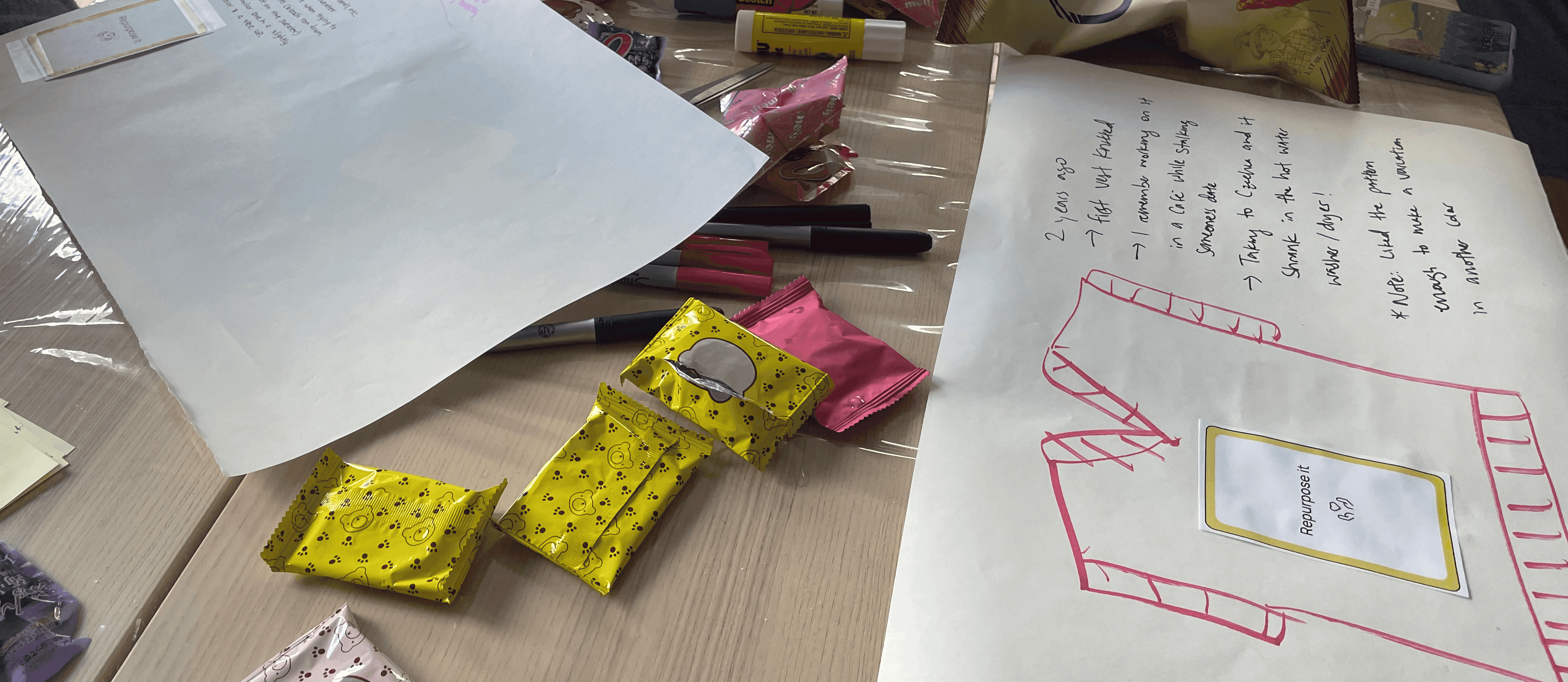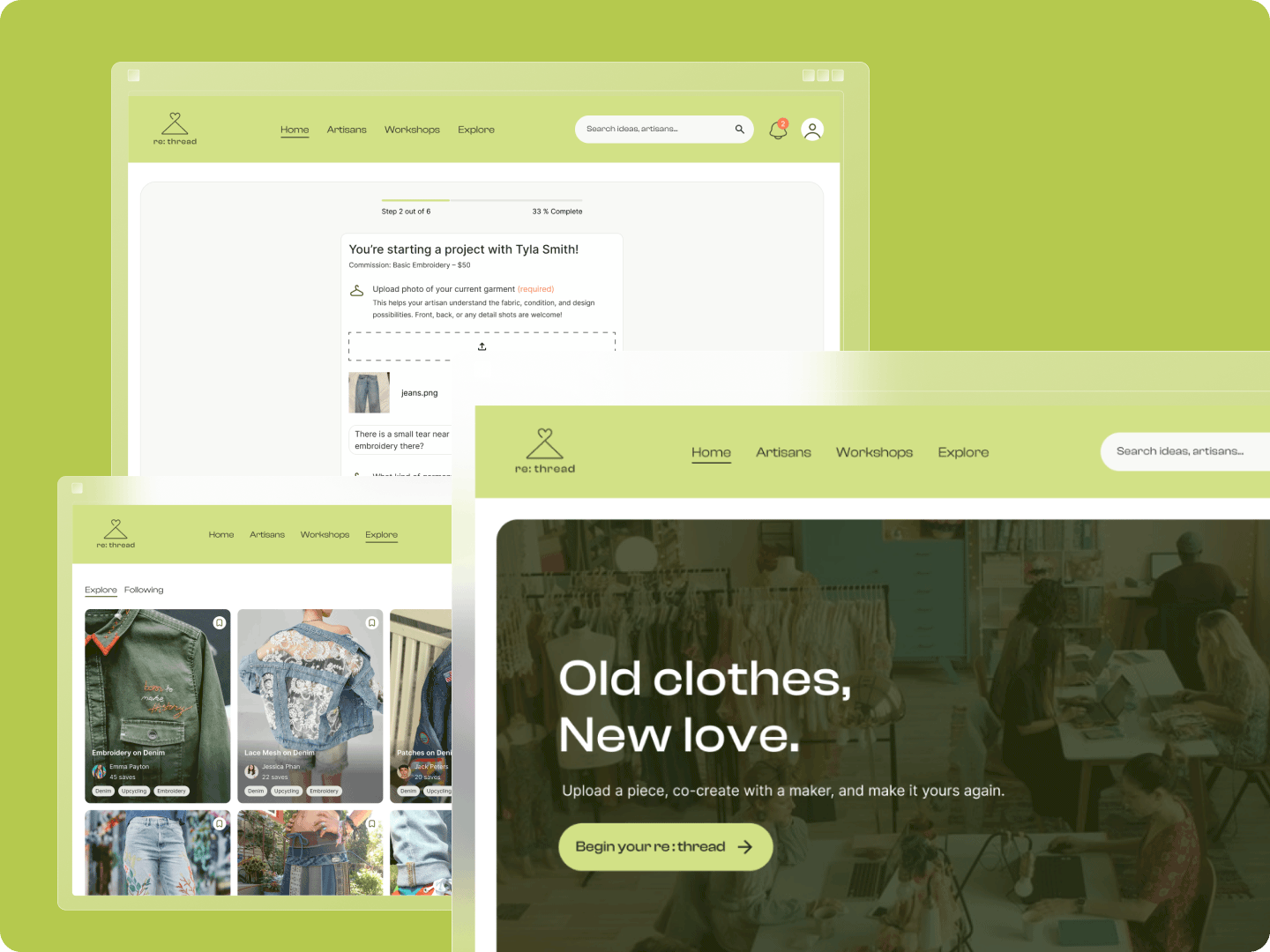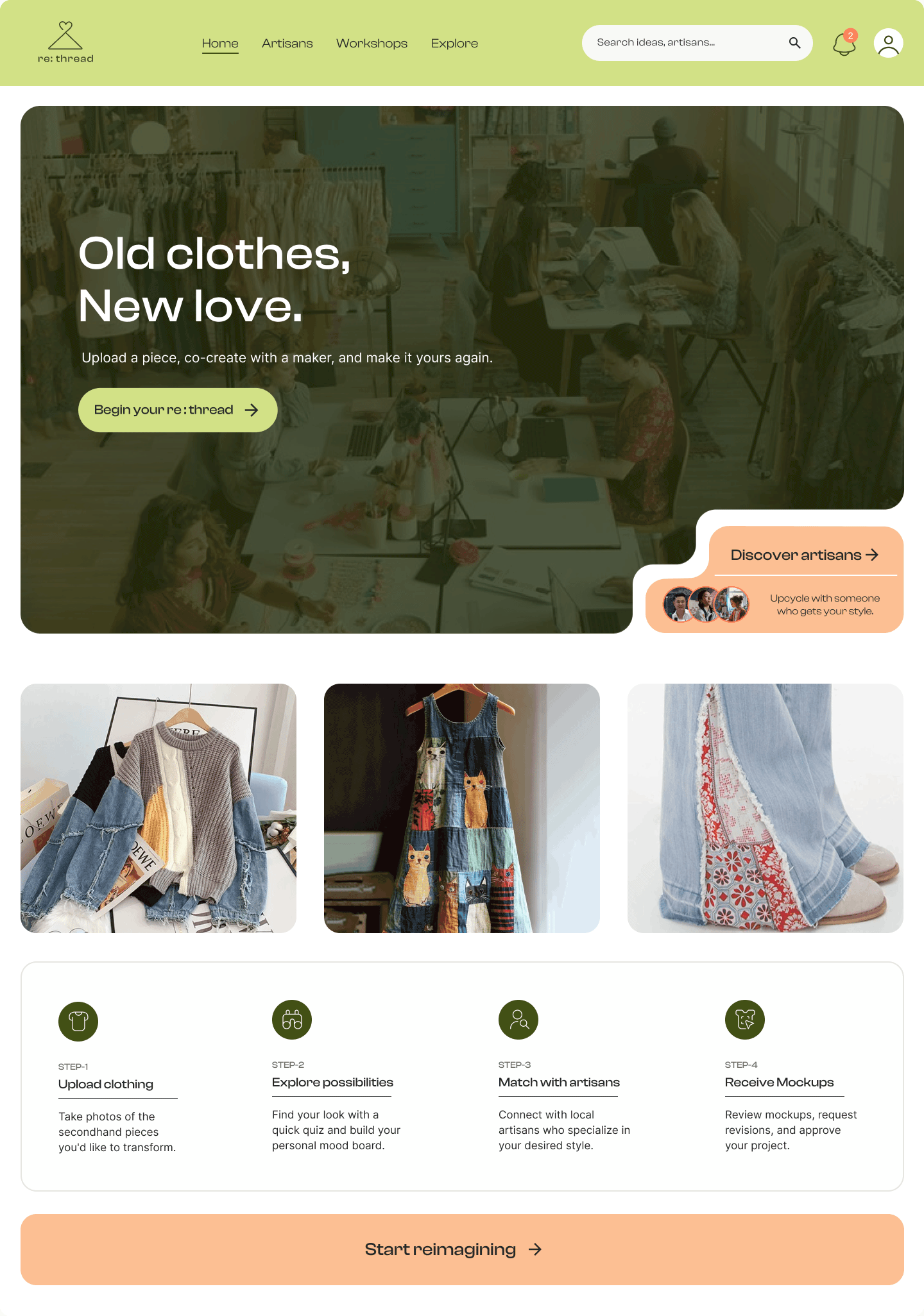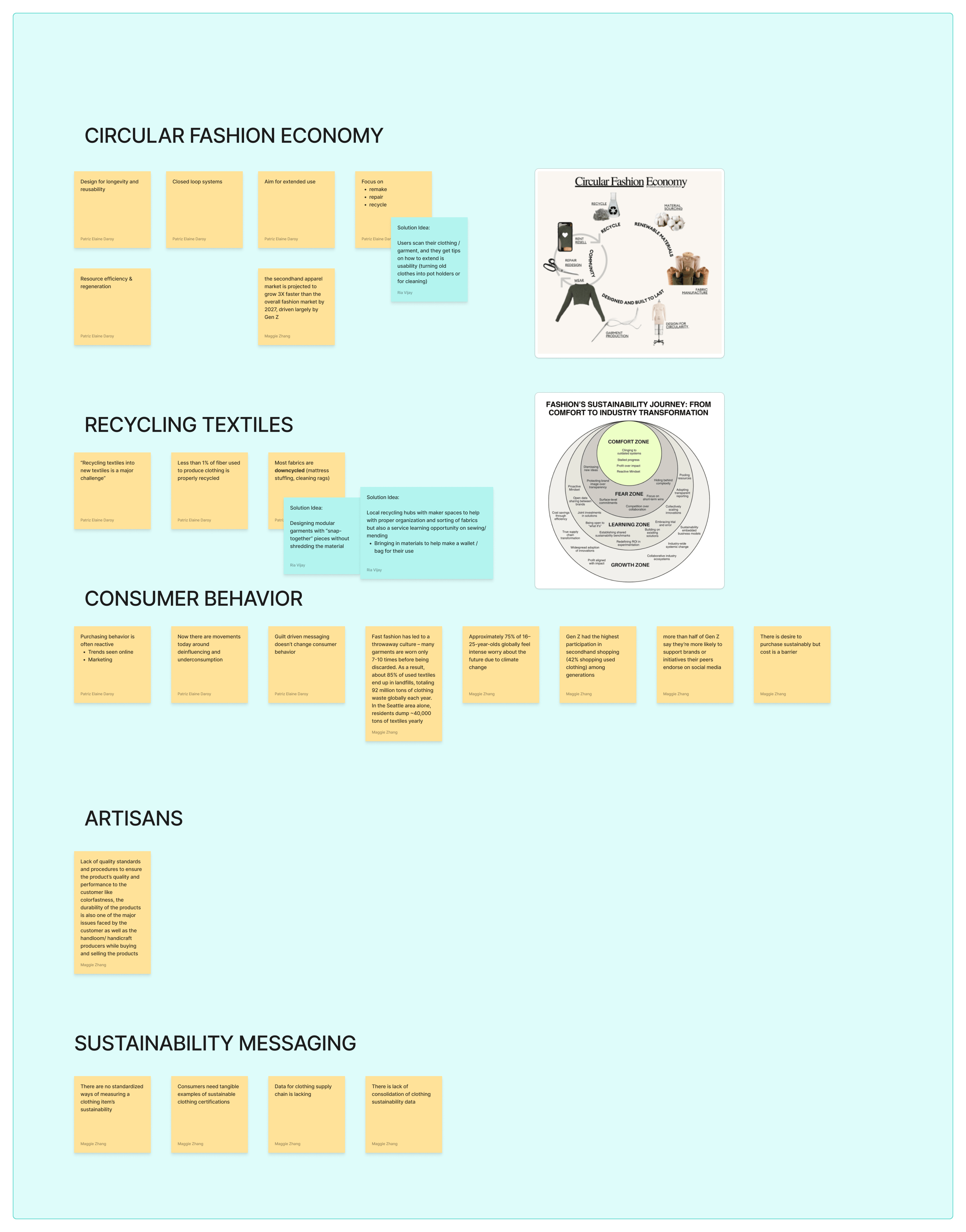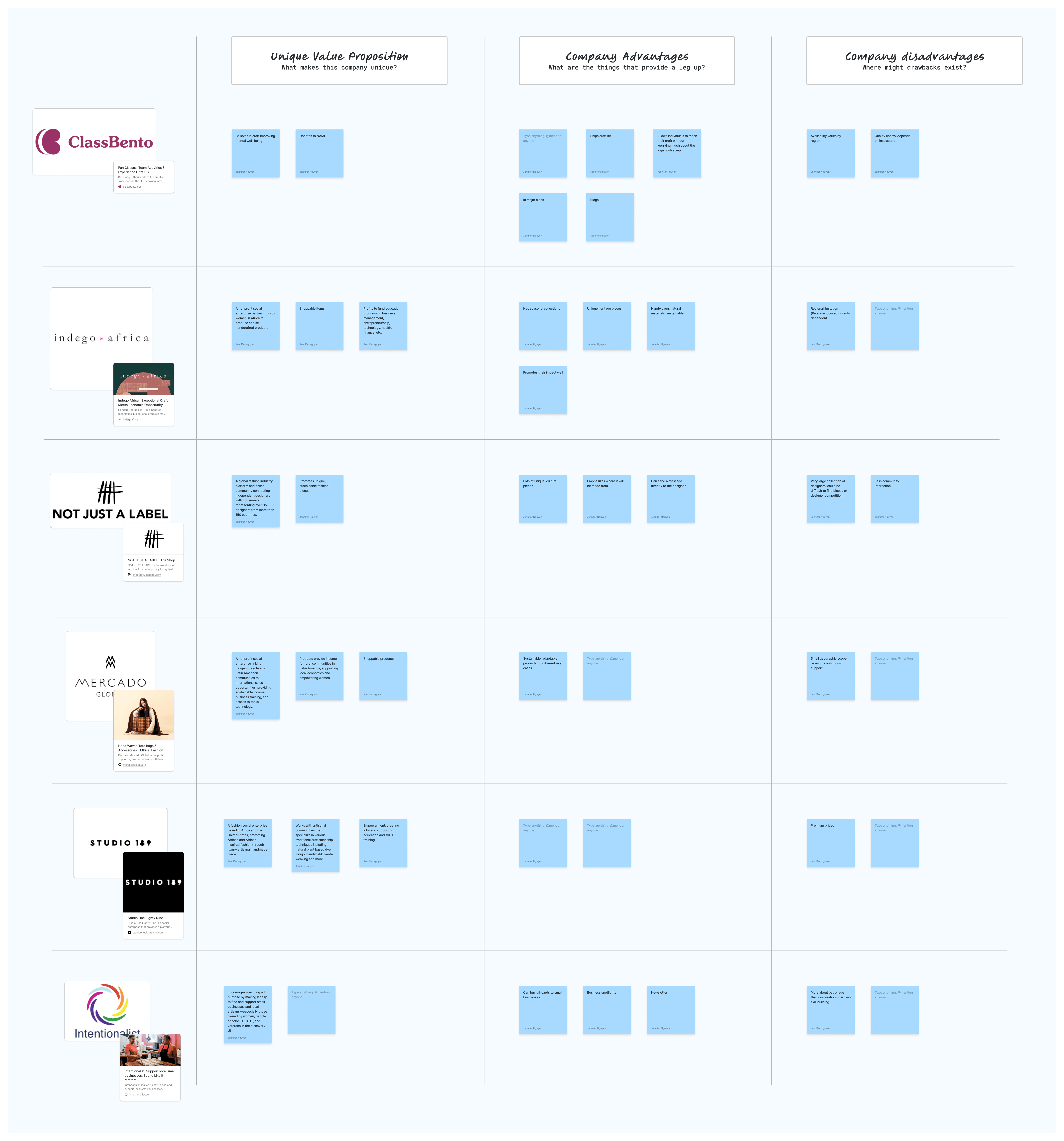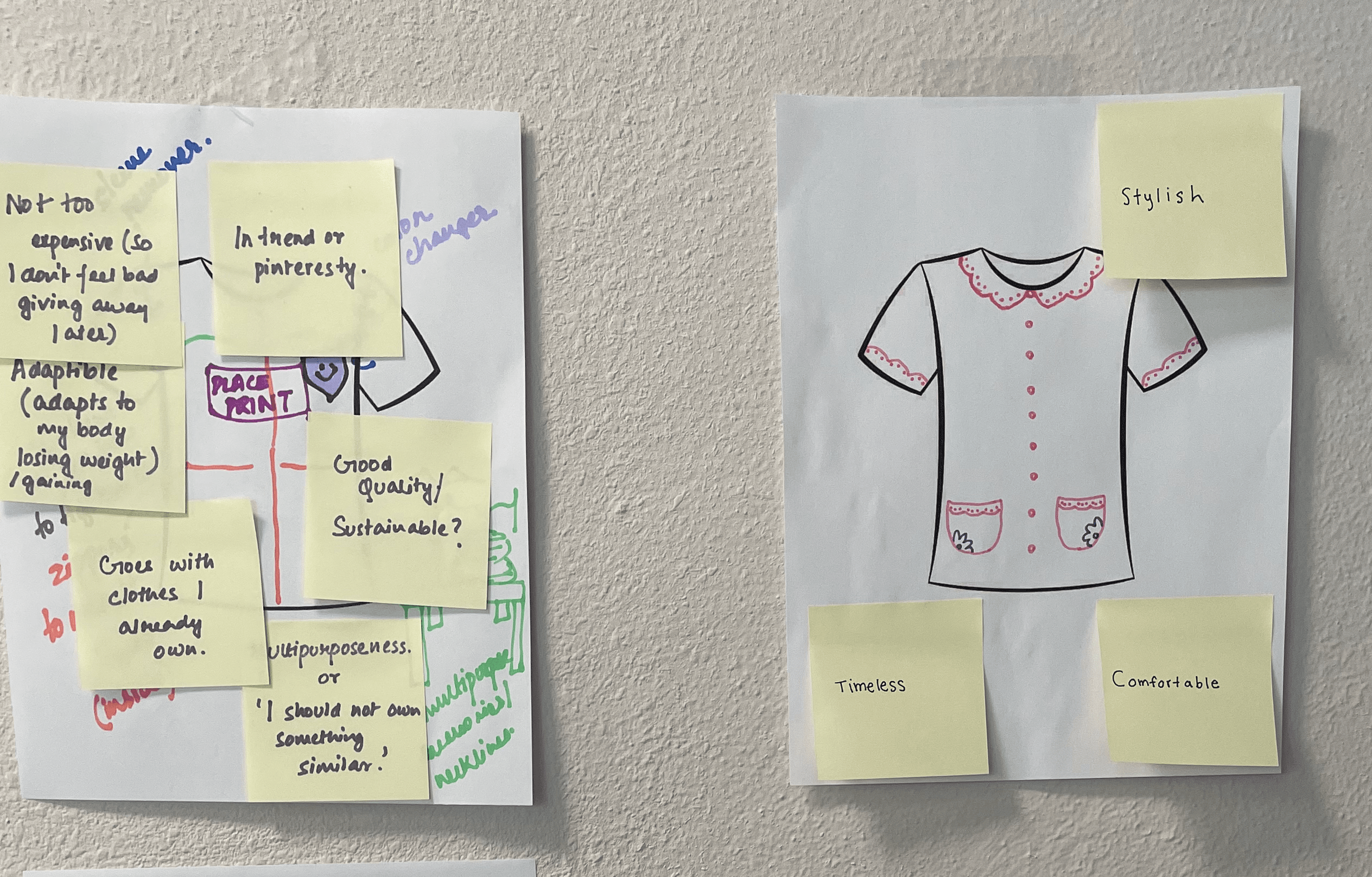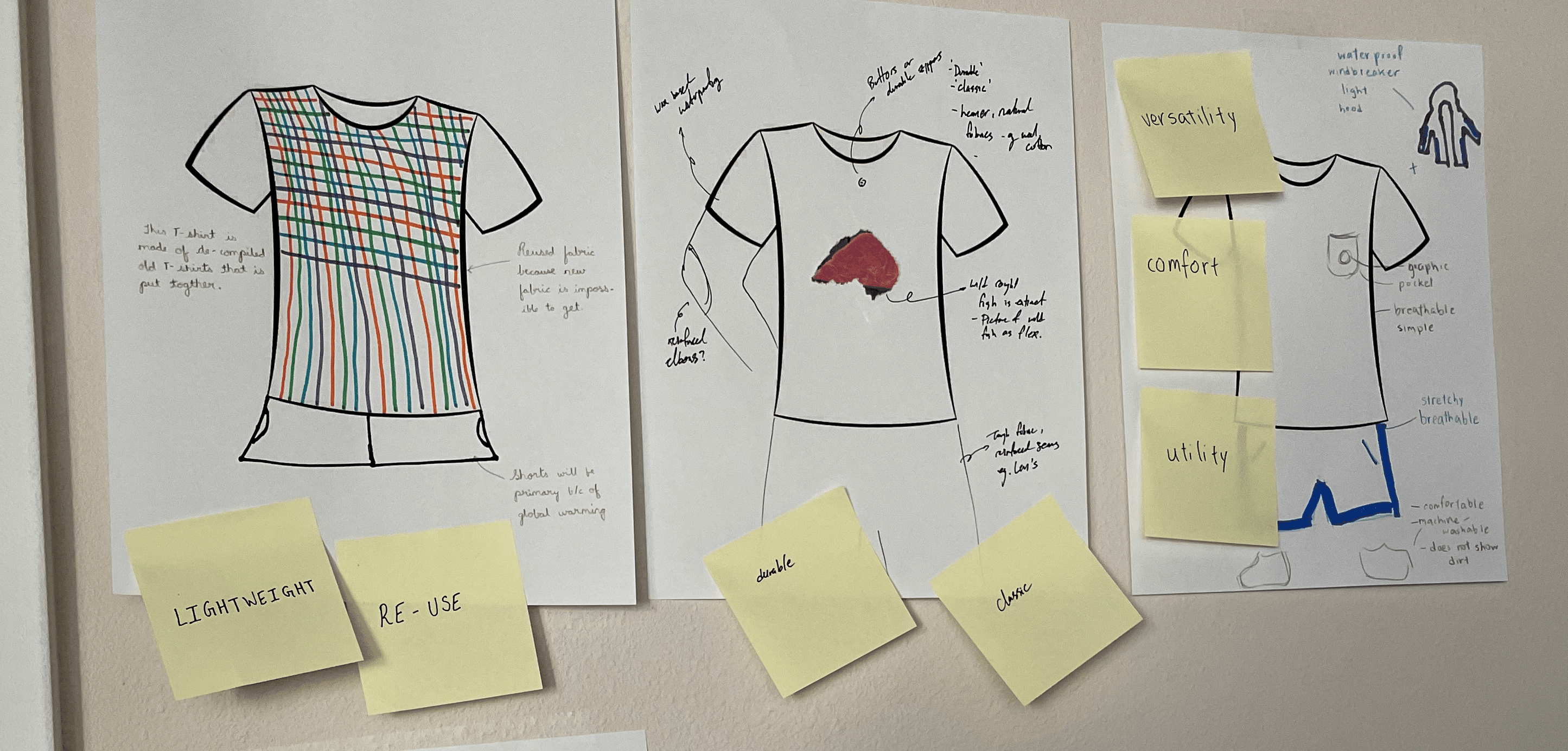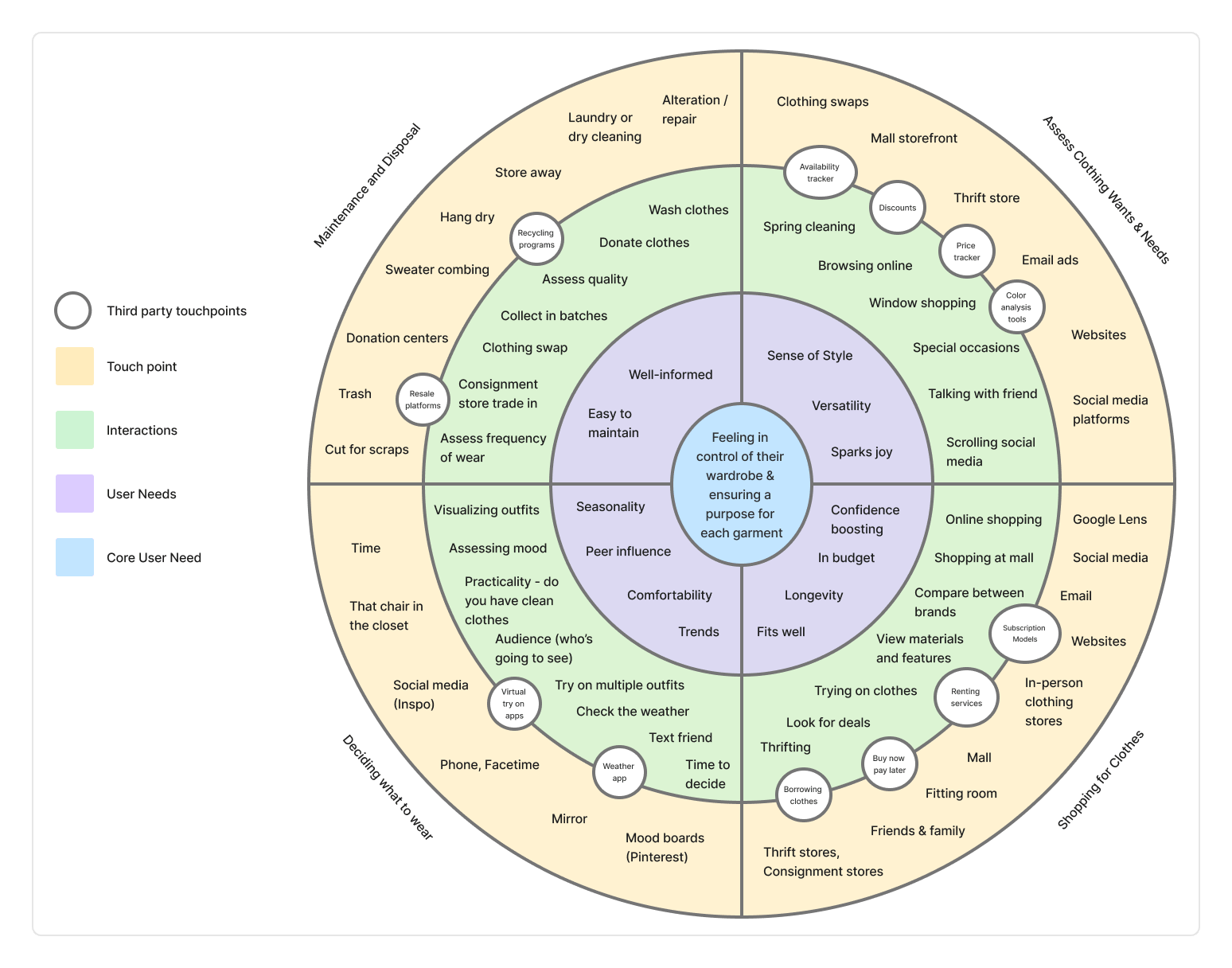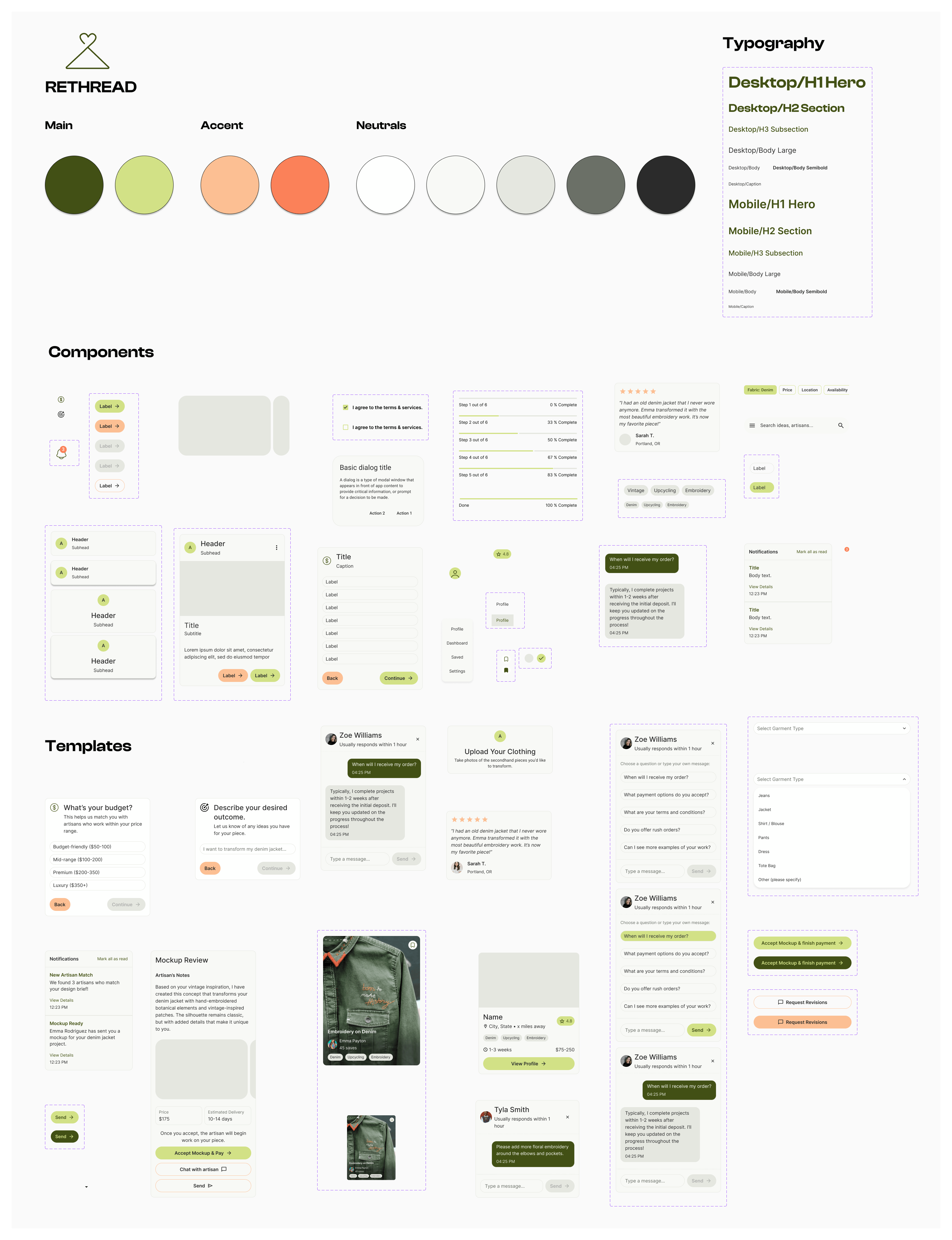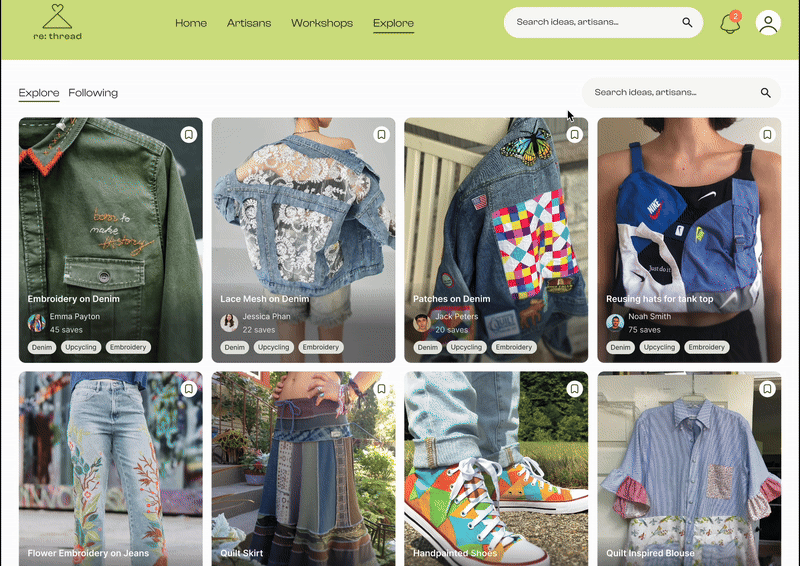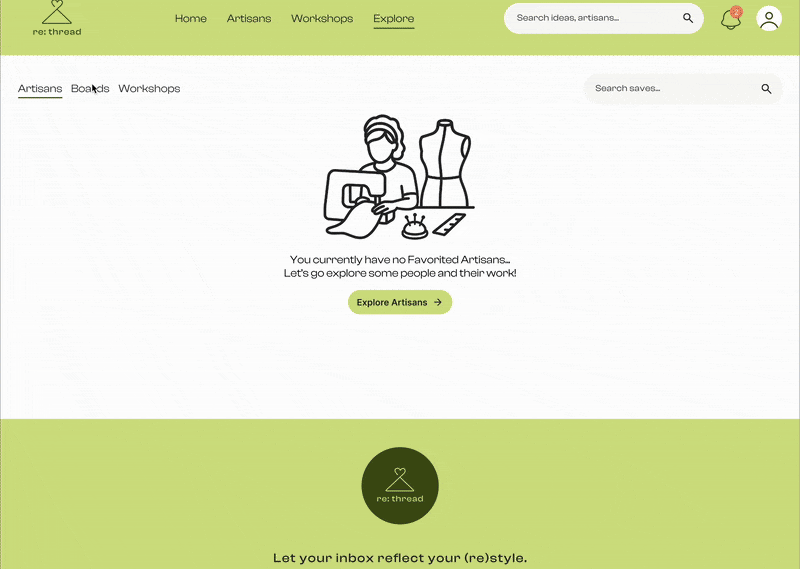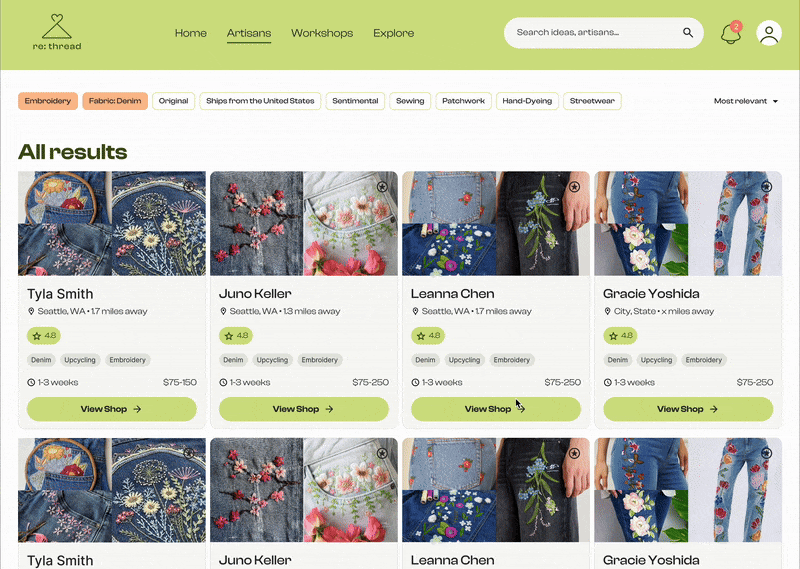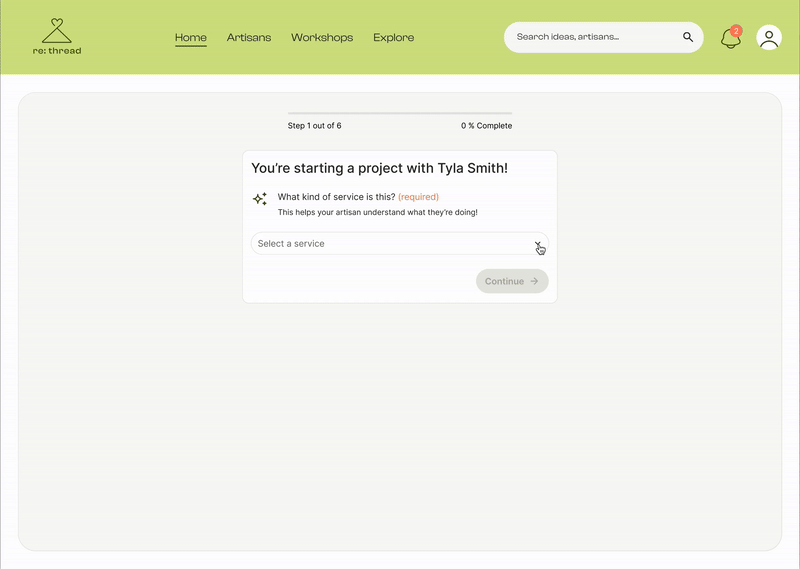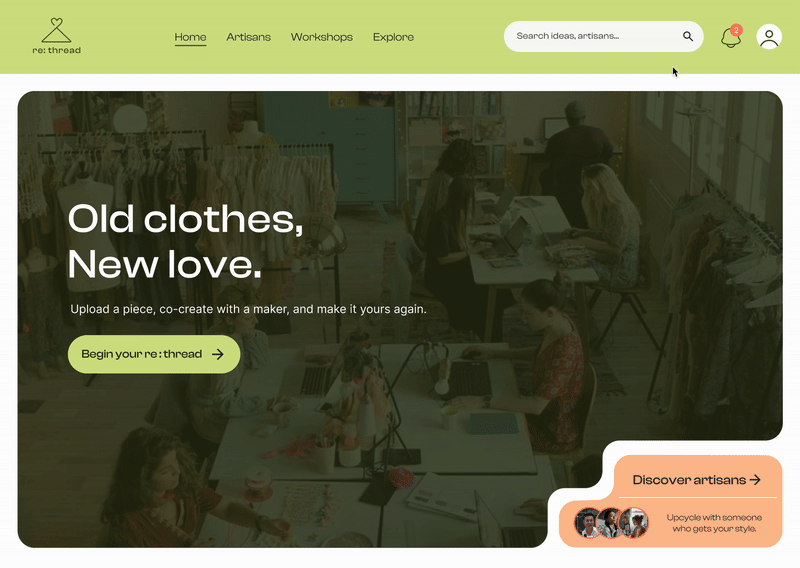We ran four co-design activities to uncover how people value, choose, and care for clothing.
Activity 1: Designing a “Future Fit”
Participants imagined a 2045 future where clothing was scarce. Using art supplies, they designed a “Future Fit” that reflected their values, selected three keywords, and discussed essentials, heirlooms, and items they’d struggle to give up.
Key Takeaways:
➺ Men focused on climate functionality (e.g. waterproofing, breathability)
➺ Women prioritized versatility, layering, and timeless style
➺ Heirlooms varied by gender: utility vs. personal/cultural meaning
➺ Shared values included comfort, durability, and quality
Activity 2: $200 Wardrobe Exercise
Participants were given a $200 “budget” to draw or list clothing items they’d want to buy now. They discussed their shopping habits, decision drivers, and how personal style influences purchases.
Key Takeaways:
➺ Men showed lower personal investment in style, often relying on partners
➺ Women chose items to reflect or expand personal style
➺ Men prioritized quality and comfort wheras women prioritized expression
➺ Style vs. practicality emerged as a recurring tension
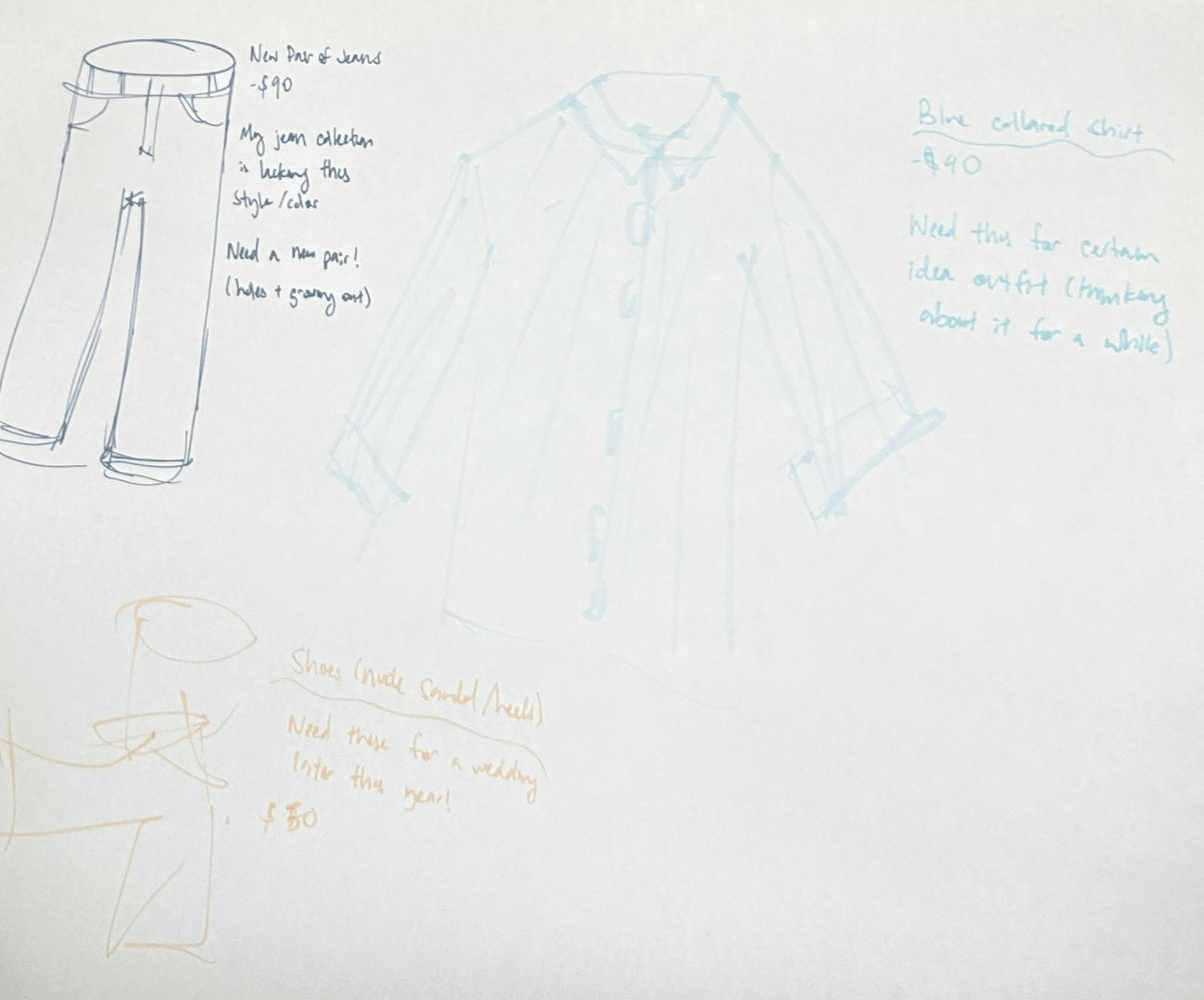
Activity 3: Outfit Reflection Timeline
Participants sketched a recent outfit and a planned future one, mapping how they made decisions across a day. This helped us see how weather, emotion, and utility guide daily wardrobe choices.
Key Takeaways:
➺ Weather was the most common decision trigger
➺ Comfort, ease, and movement often beat aesthetics
➺ Men used simplified wardrobes to reduce decision fatigue
➺ Women curated versatile wardrobes to express identity

Activity 4: Emotional Attachment Mapping
Participants mapped the journey of a memorable item and chose its fate using cards like “Fix it” or “Farewell.” This explored what drives decisions around keeping, repairing, or letting go.
Key Takeaways:
➺ Women tied clothing to memories, milestones, and imagined futures
➺ Men focused on function, value, and refresh cycles
➺ Emotional vs. practical motivations shaped long-term garment use
➺ The activity surfaced how reflection can trigger reuse or repair
